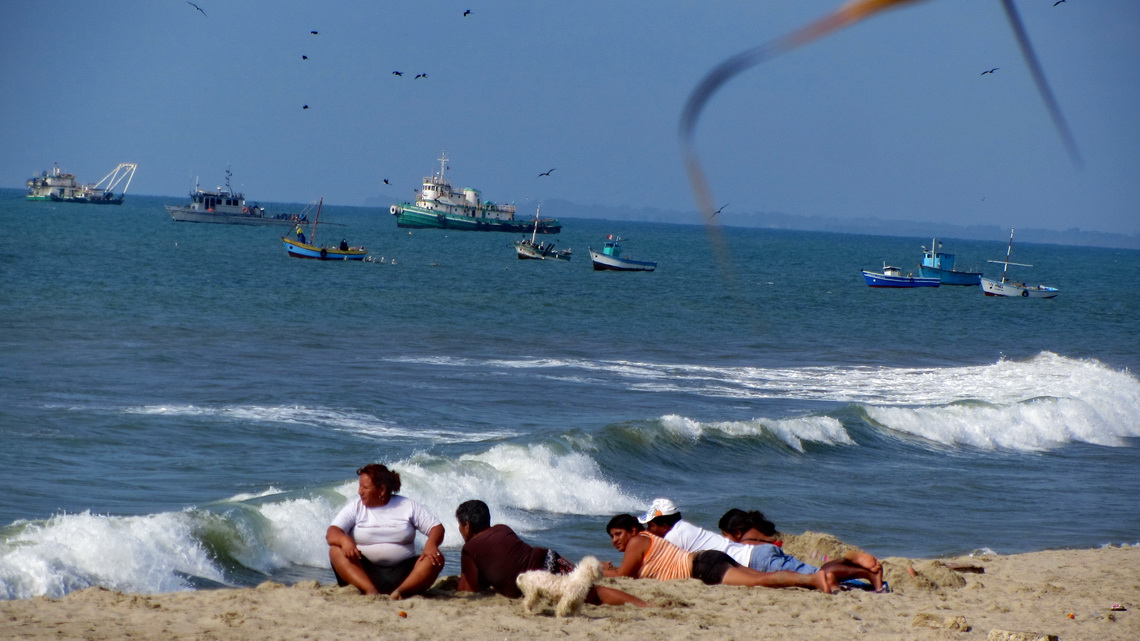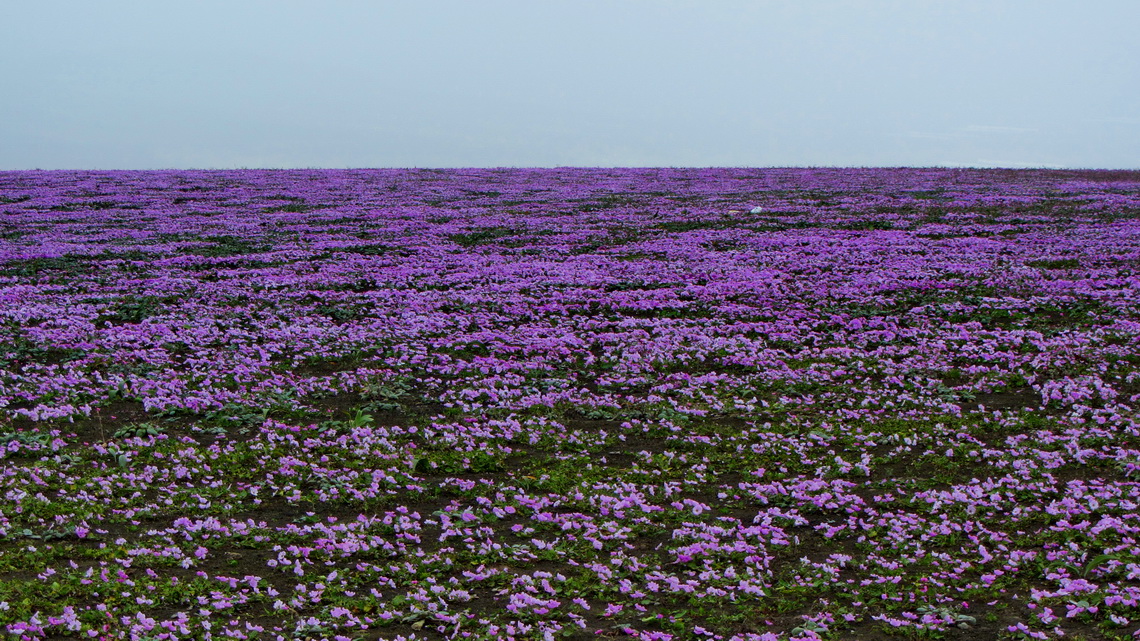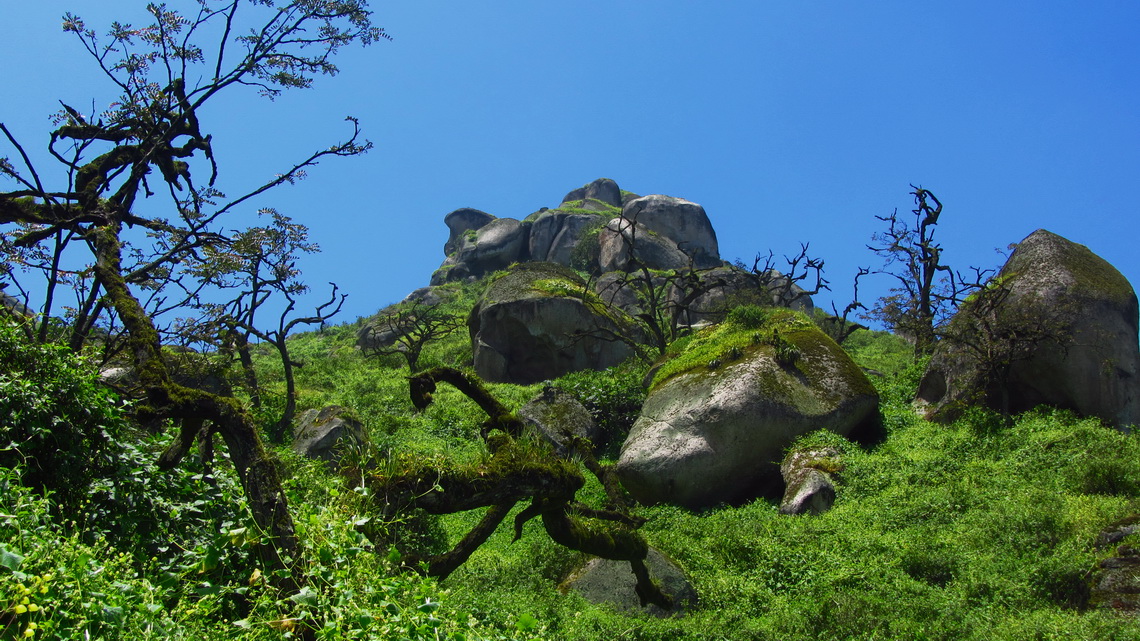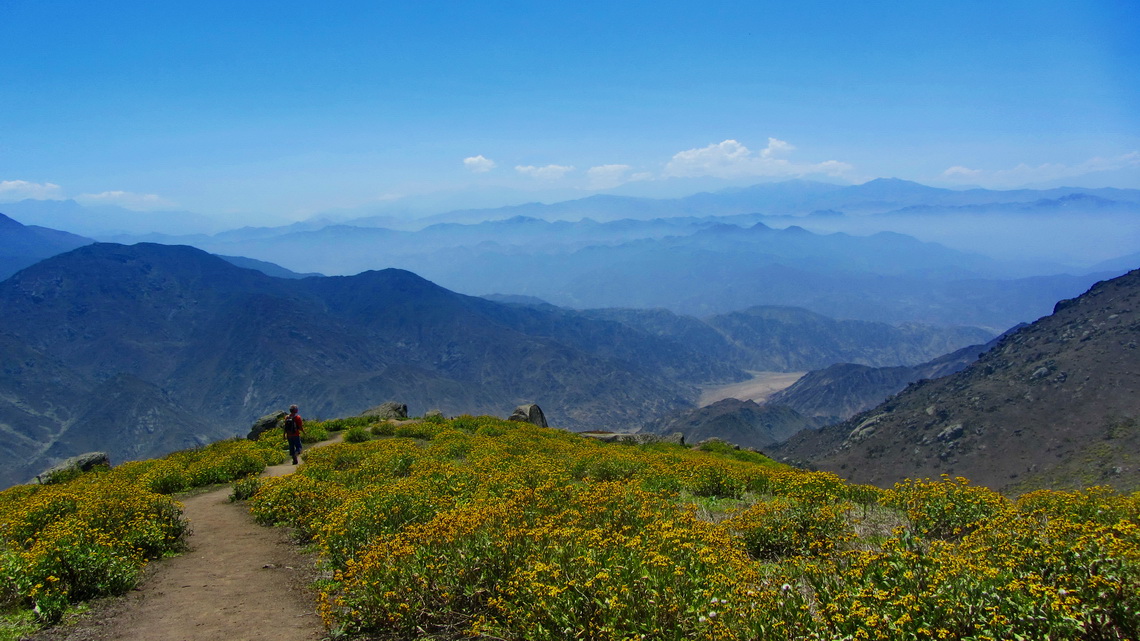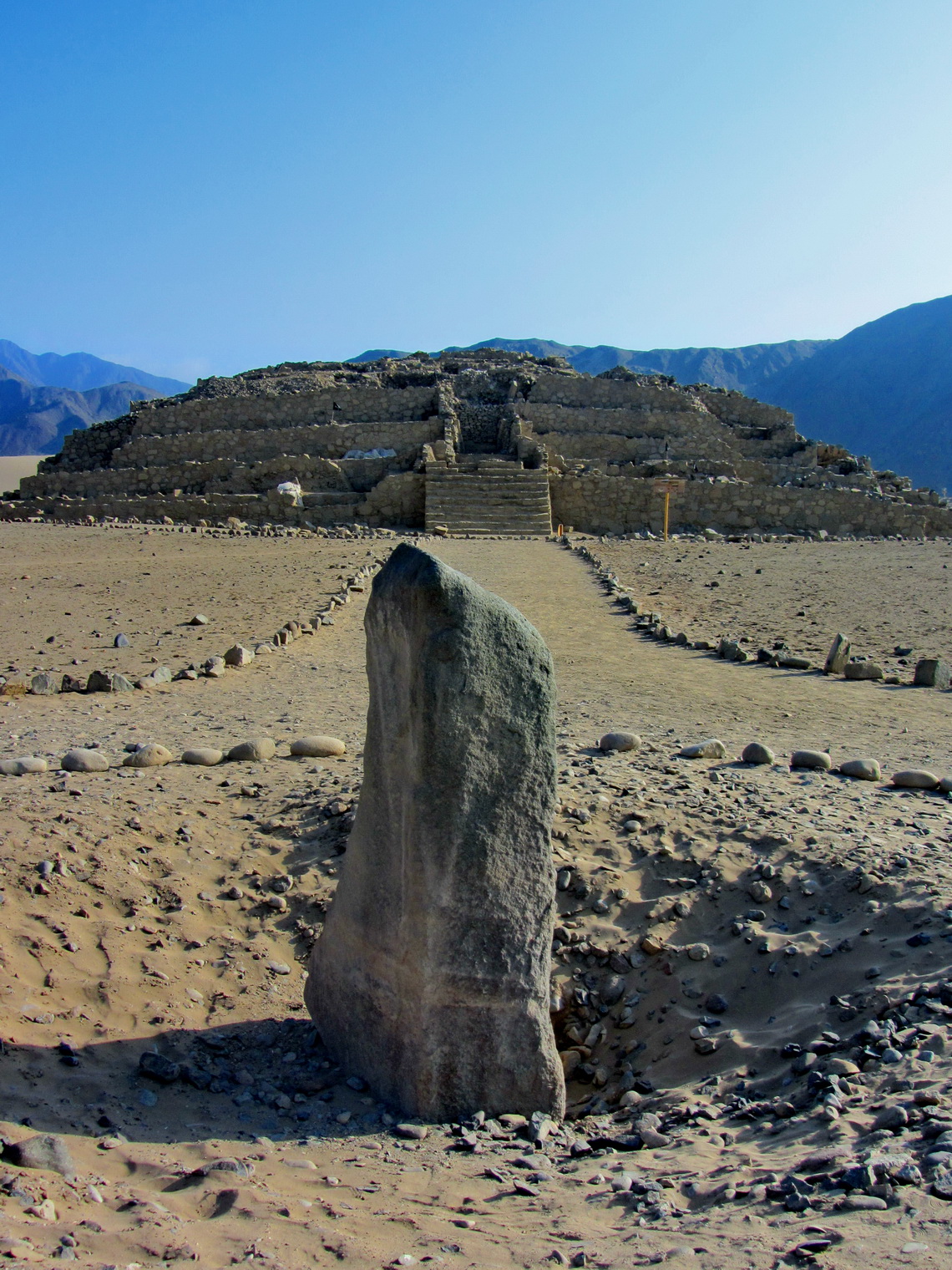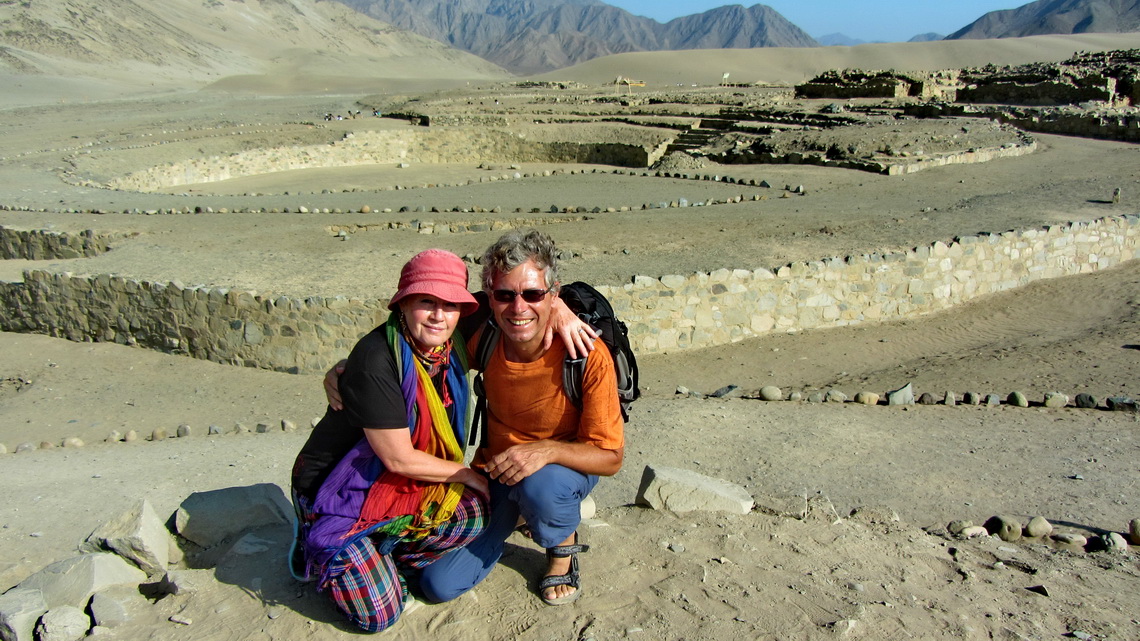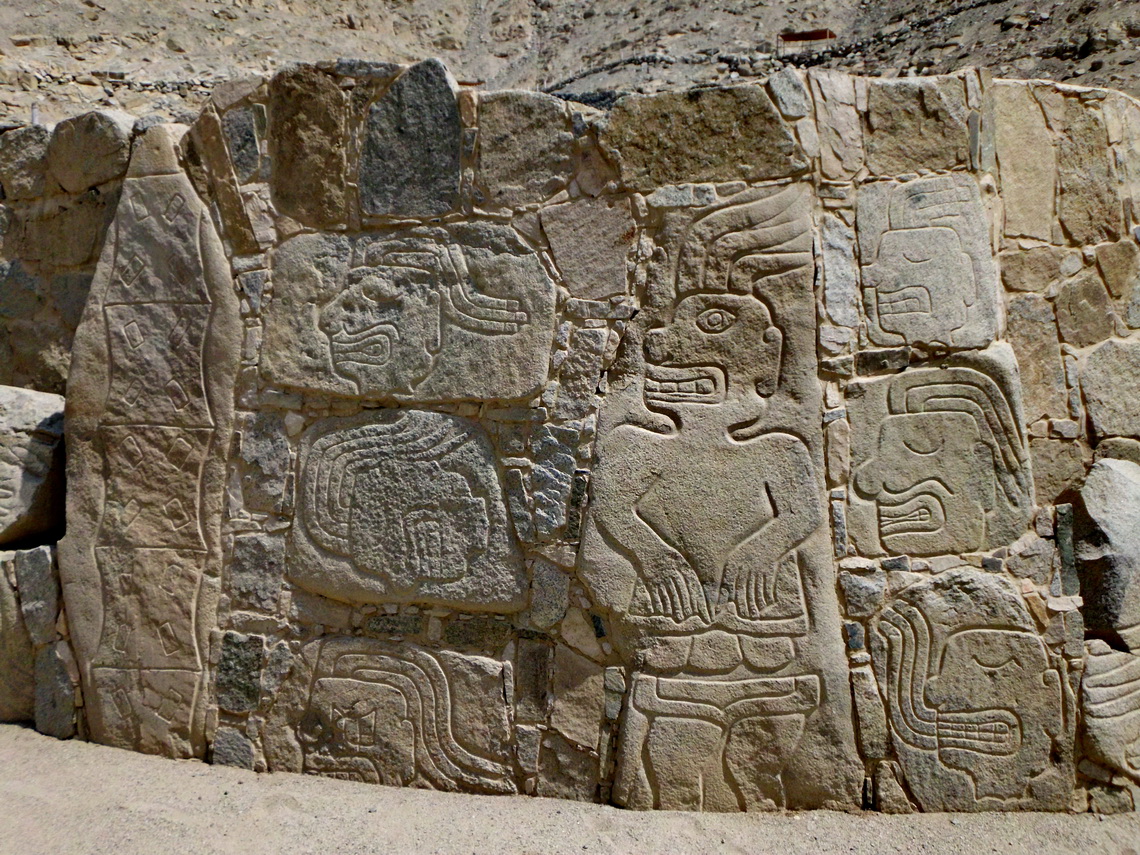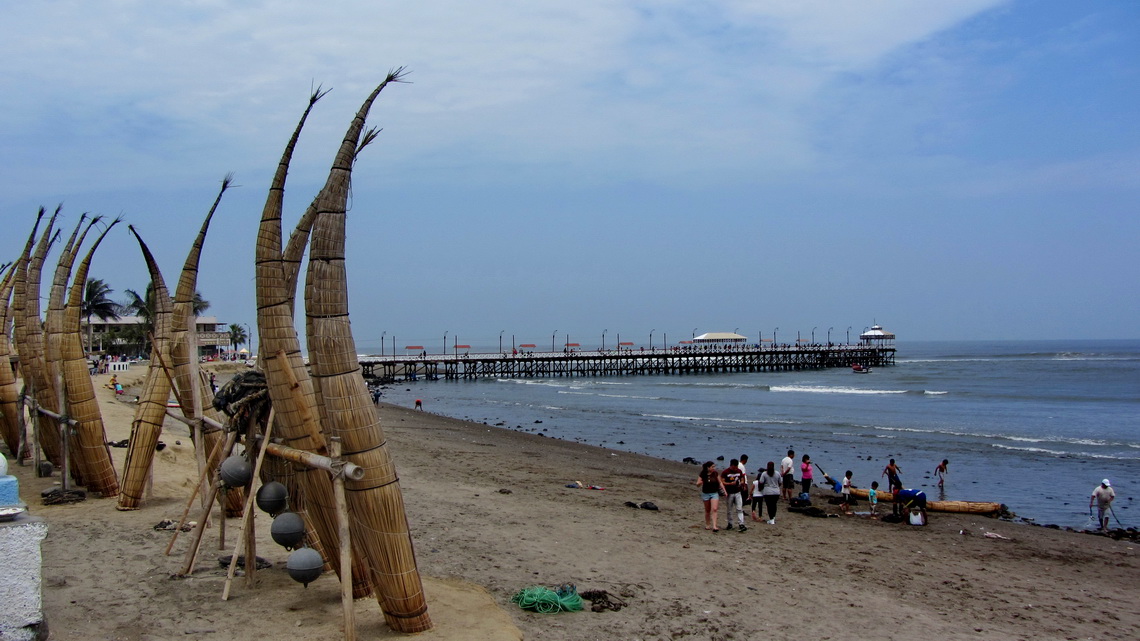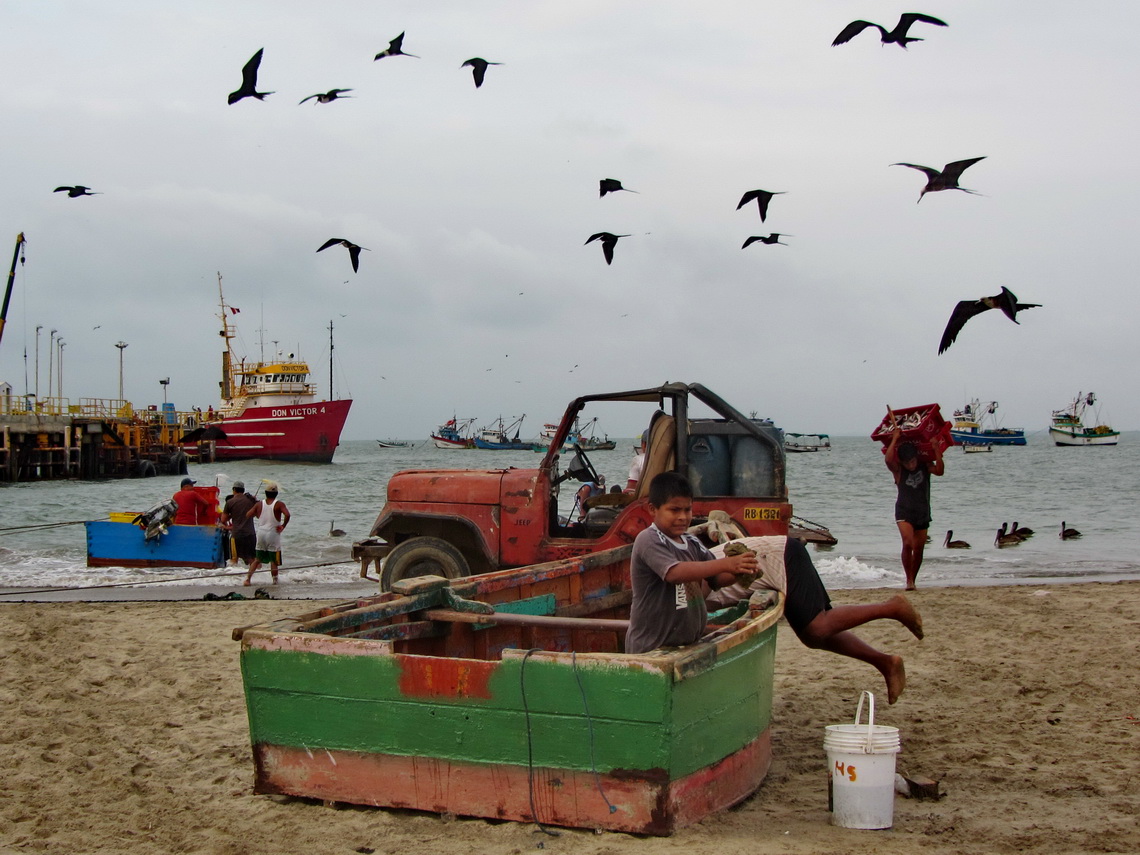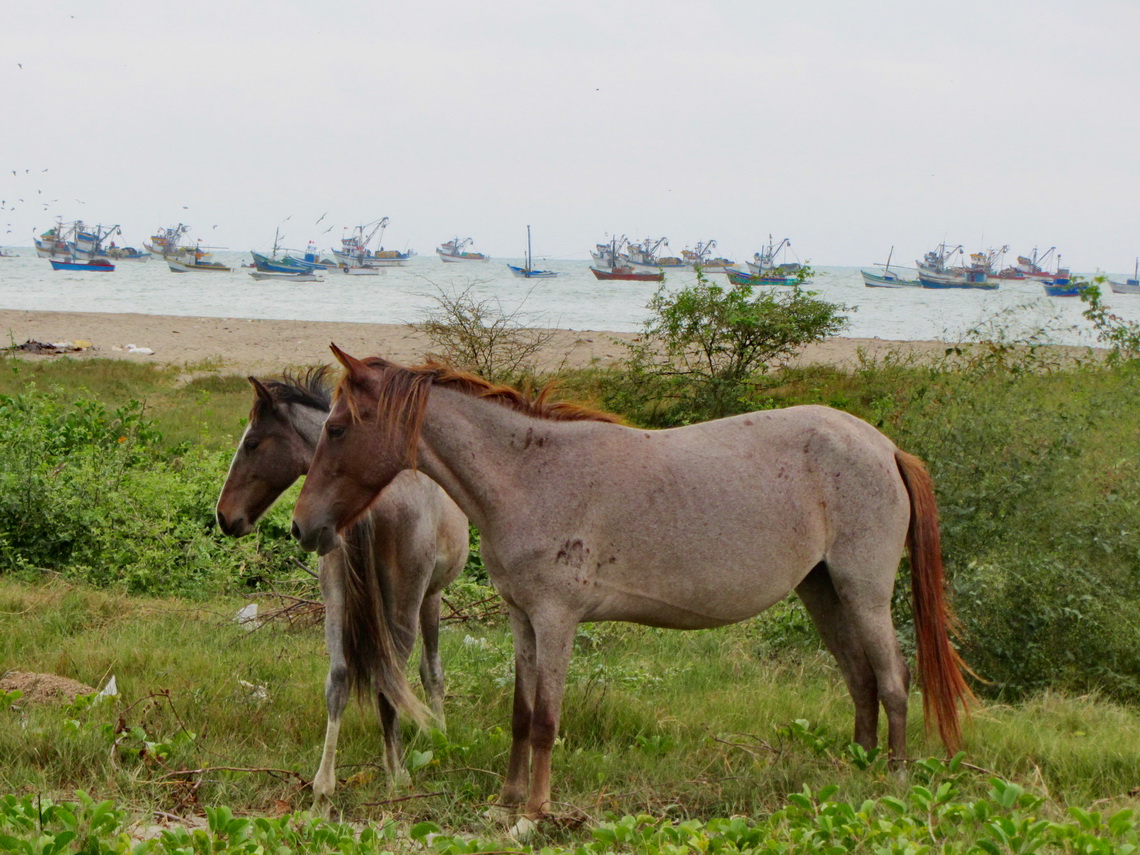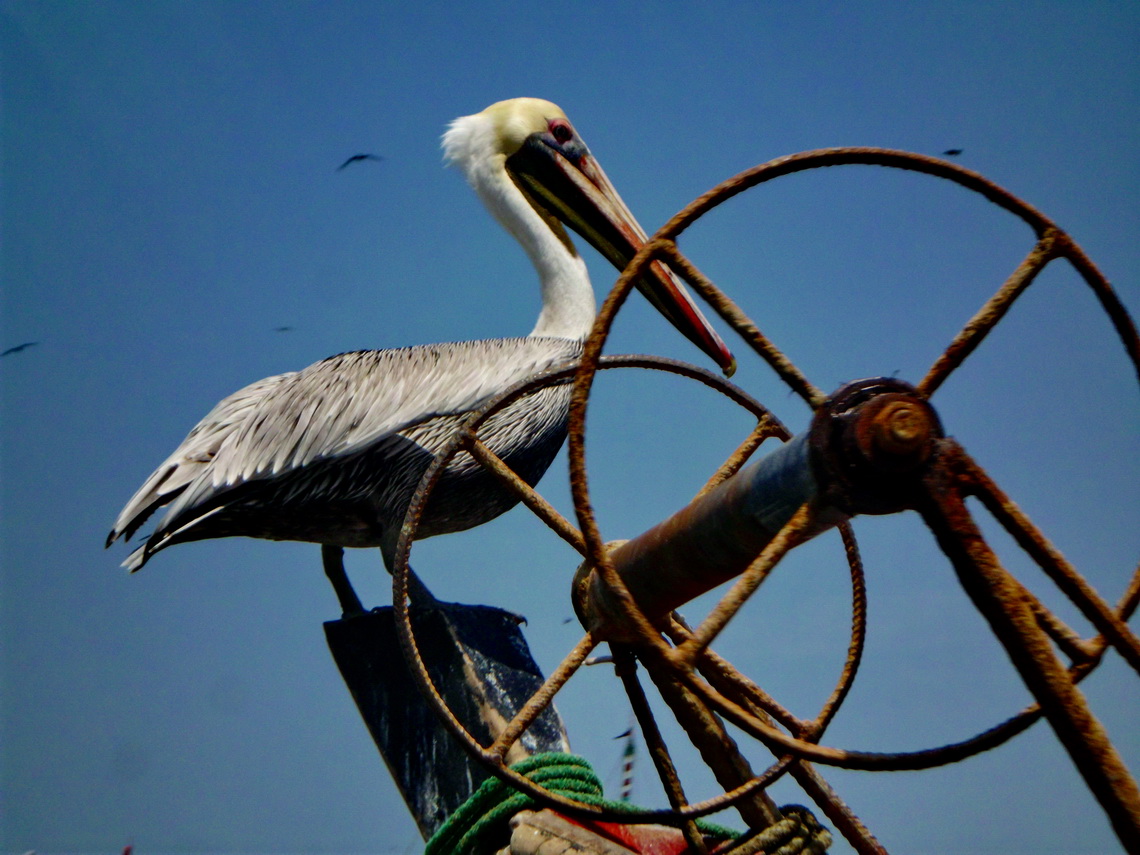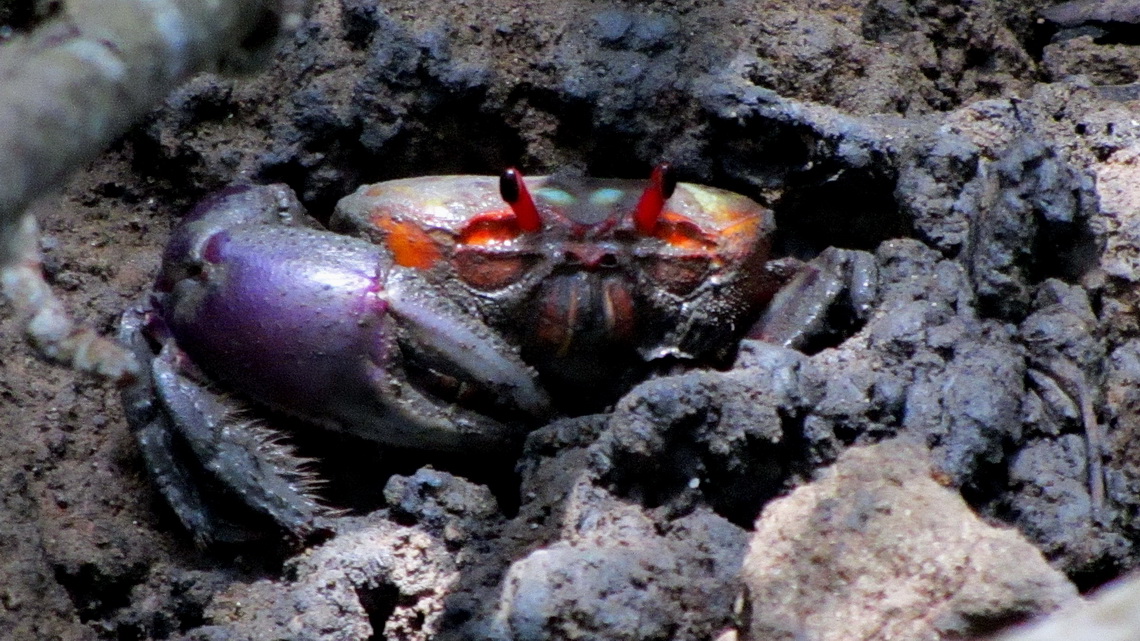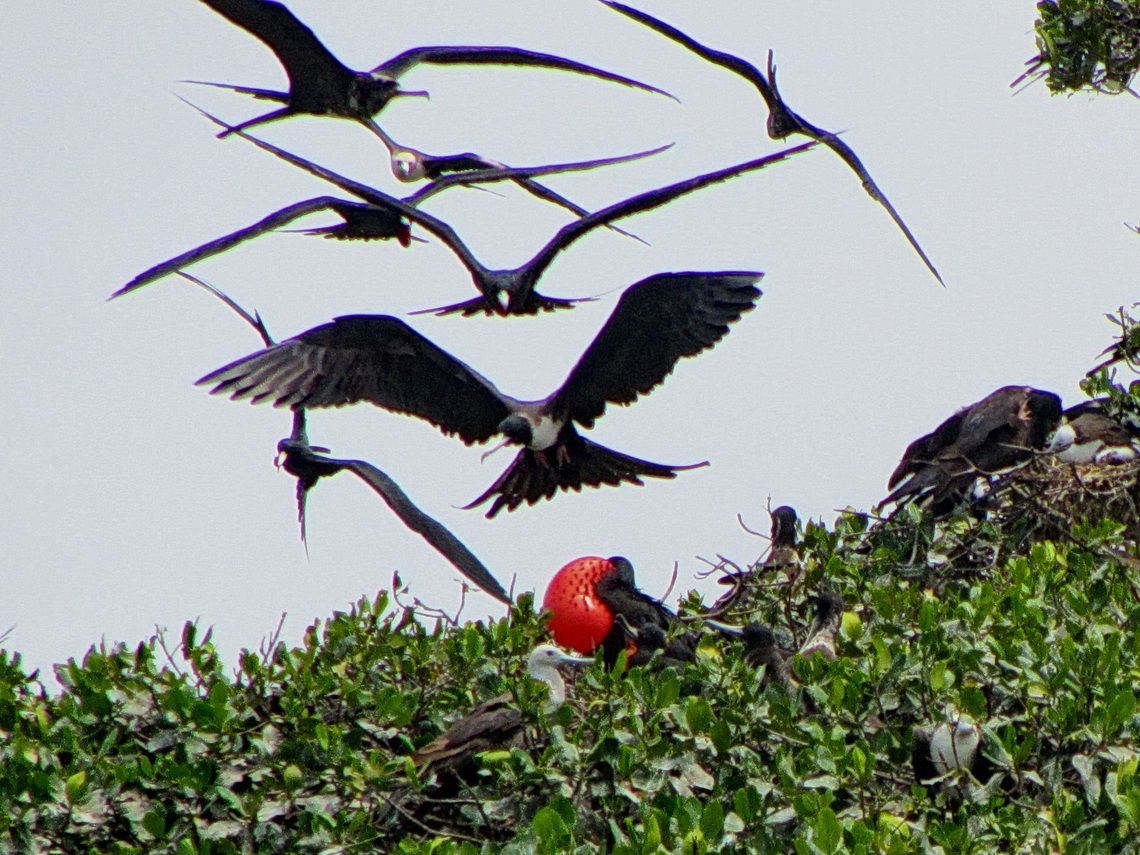Southern Peru has Machu Picchu, Cusco and many other historical sites of the Incas but on the Pacific coast north of Lima are innumerable testimonies of ancient Peru, many still not detected or buried in the sand of the extreme dry Atacama desert which is a perfect conservation medium. The UNESCO world heritage site Caral is supposed to be one of oldest city on earth, founded 4500 to 5000 years ago. Other top highlights are the ruins of the pre Inca cultures Chavin, Moche, Sican and Chimu like Chan Chan the mightiest town of our world built with adobe, which we had visited in the year 1980.
Today there are huge cities like Trujillo or Chiclayo in the desert, where the sweet water from the glaciers of the Andes flows into the Pacific Ocean. Close are beautiful beaches, which are popular holiday destinations in the austral summer. The coast turns 90 degree on the most western point of the continent and the the impact of the cold Humboldt ocean current weakens. The landscape becomes more green and tropical the closer you come to Ecuador. The water temperature is pleasant and on the border are the only mangrove forests of Peru located. This region is very fruitful with many rice, bananas and sugarcane fields.
Approximately hundred kilometers Northwest of Lima is the incredible lush national park Reservas Nacional Lomas de Lachay, a true oasis in the dryest desert of our planet. The mist of the ocean is sticking so long on its crests that a rich fauna including raptors and flora with trees are able to exist. Lachay has a remote campground and superb hiking trails over and around its ridges. We were lucky because we spent a sunny day in Lachay, which is very rare.
Close to the bifurcation to Huaraz are the ruins of Caral, the most ancient city of the Americas. It is a mystic and pristine place located in the arid Supe valley. 3000 people had lived in this urban center between 2600 and 2000 BC. The footpoint of the well preserved main pyramid is about four football fields and its height is 18 meters. Nearby are five other pyramids and a huge amphitheater. Several cornets and flues made with Condor and Pelican bones had been found here but neither weapons nor pictures of warlike disputes.
Before we continued along the coast we headed to the mountains to circle the impressive Cordillera Huayhuash. When we returned two weeks later we hasted relatively fast to Ecuador because we were eager to fly back to Germany to see our first grandson Theo, which had been born six weeks ago. Parking our car in Ecuador was much easier because its stay is limited to 90 days in Peru as well as in Ecuador. But Ecuador is much smaller and we were already more than 60 days in Peru.
The 3600 years old ruins of Sechin are situated on the very good and fully paved road from Huaraz to the northern coast via Punta Callan. Strange are well preserved reliefs with martial pictures like beheaded enemies or warriors with clubs.
North of Trujillo we strolled around in the trendy fishing village Huanchaco. In Lambayeque (close to Chiclayo) we visited the extraordinary museum Museo Tumbas Reales de Sipan, which is a top highlight of northern Peru. It shows replicas of several graves of the 2300 years old Sipan culture including real mummies of a prince, his wives, one of his son and other people like his field marshal which had to follow him into the grave. It demonstrates also the different states of excavations which had been started in the late 1980th and is not finalized yet. Unfortunately taking pictures is not allowed.
Our last days in Peru we spent on the warm Northwest coast between Mancora and the Ecuadorian border. Fancy Mancora is one of most popular tourist destination of Peruvians thanks to the ever shining sun, warm water temperature, endless beaches and excellent surfing opportunities. We found the pleasant campsite La Posada nearby the western beach (GPS coordinates: S4 06.533 W81 03.567). Another beautiful village is Zorritos with less tourism but authentic Peruvian fishermen life.
The last few kilometers to Ecuador the Peruvian Pacific coast changes dramatically: After more than 2000 kilometers desert from the Chilean border it becomes green and lush with the onliest mangroves in Peru. Wildlife is abundant. A Crocodile breeding farm is close to Puerto Pizarro, the best spot for a two hours cruise into the mangroves on a little fishing boat.
October 10th 2013 we crossed the border to Ecuador - Bye, bye Peru.
For more pictures, please click here For a map of our itineraries, click here
To download the GPS coordinates file, click here
